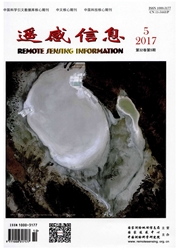

 中文摘要:
中文摘要:
随着全球变暖和城市化进程的加快,大城市城区的热岛效应日益严重。城市下垫面对地表能量交换的影响巨大,引起地表温度分布的不均一性。遥感技术的发展为地表温度的反演提供了可能。近年来人们使用劈窗算法对均一的海面温度的反演很成功,但是受空间分辨率的限制以及陆面的不均一性,陆面温度的反演一直是一个没有解决好的问题。覃志豪提出了一种TM热红外波段单窗算法,可以利用辅助气象资料快速计算出地表温度。本文以北京市城区为研究区,采用Landset ETM第6波段的单窗算法,反演了亮度温度和地表实际温度,分析了城市下垫面情况下NDVI与地表温度的相关关系,并解释了北京城区热岛在空间上的分布及其可能的原因。结果表明:北京市城区热岛效应显著;地表温度与NDVI相关性显著;城区绿地和水体在区域的温度分布中起到重要作用。
 英文摘要:
英文摘要:
With the globe climate warmer and the extension of city area, the urban heat island effect has become a serious problem of city environment. Urban ground surface has an important effect on the energy exchange between air and land, which leads to an inhomogeneous distribution of land surface temperature (LST). Remote Sensing technology provides an approach to monitor LST. For a long time, homogeneous ocean surface temperature has been successfully retrieved with multi-window algorithm, while the land surface temperature could not reach the same precision for the low spatial resolution and the inhomogeneous surface. Qin et al. (2001) developed a mono+window algorithm, and the LST was successfully retrieved from the Landsat TM 6th band image. This paper retrieved the planetary brightness temperature and the LST of Beijing urban area by the algorithm. The correlation between NDVI and LST was also analyzed, the regional difference of temperature spatial distribution in urban area and the pc,ssible causation were explained. The result indicated, that the urban heat island effect in Beijing urban area was very obvious , the LST retrieved from the TM 6th data has a strong correlation with NDVI, vegetation and water play an important role in the urban LST distribution.
 同期刊论文项目
同期刊论文项目
 同项目期刊论文
同项目期刊论文
 期刊信息
期刊信息
